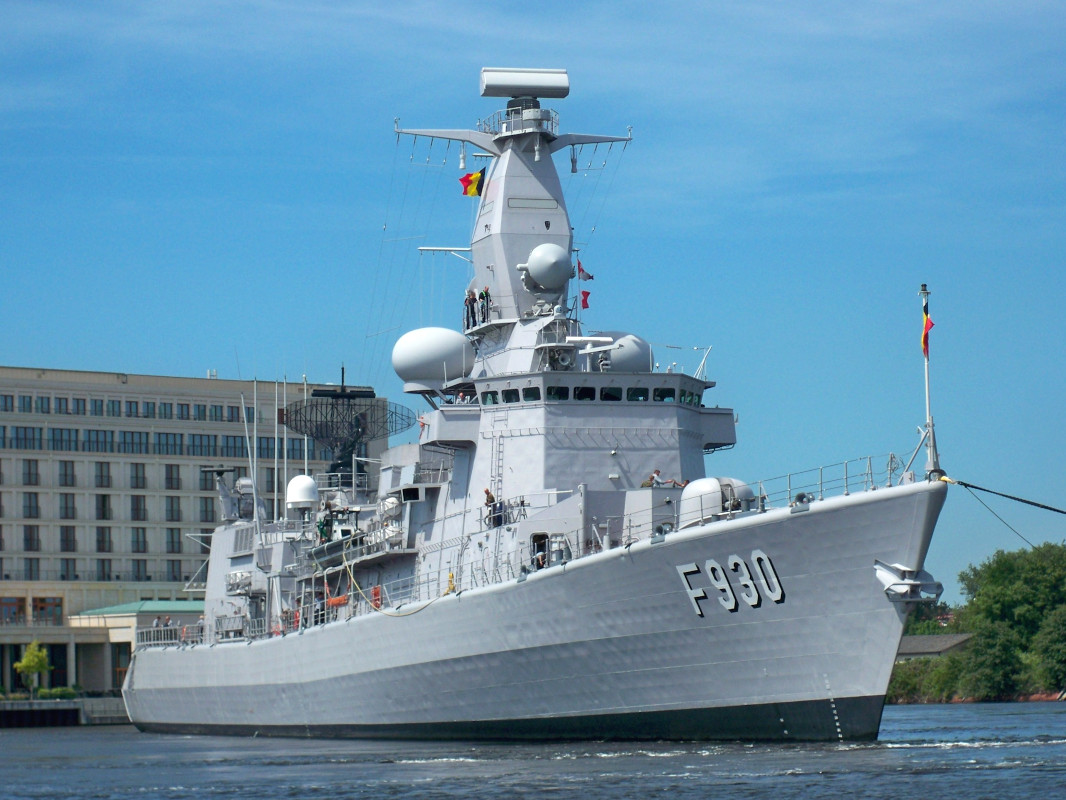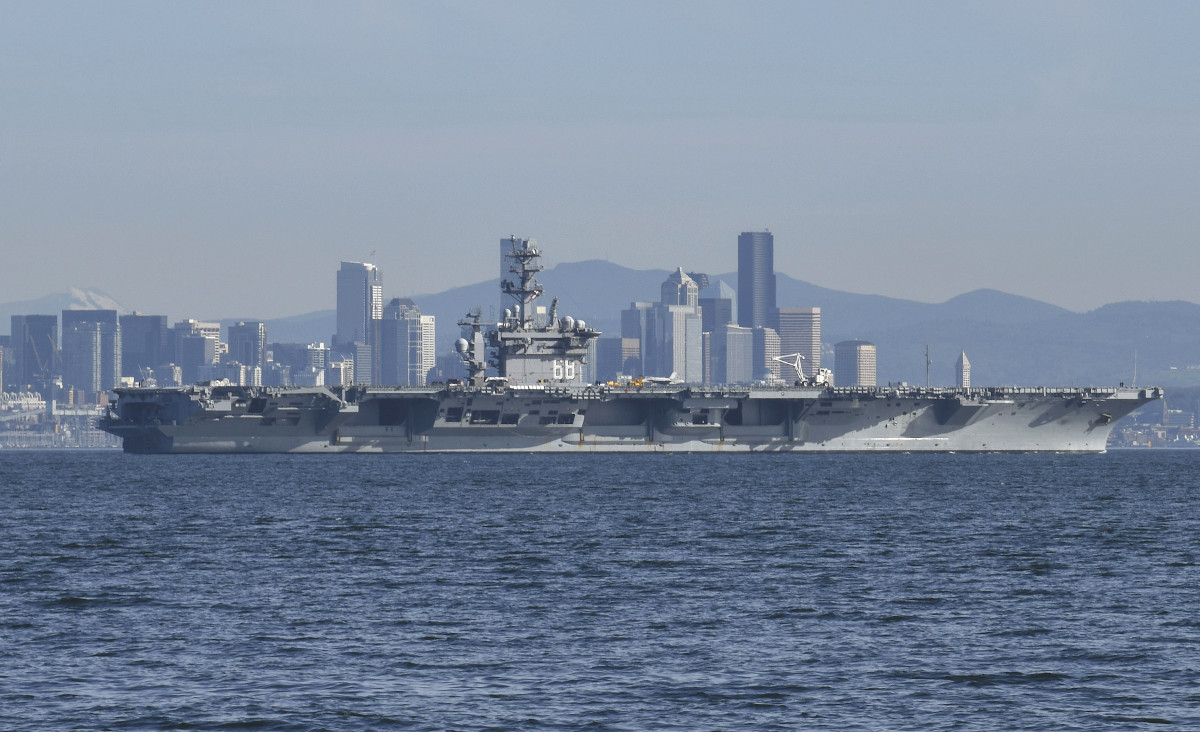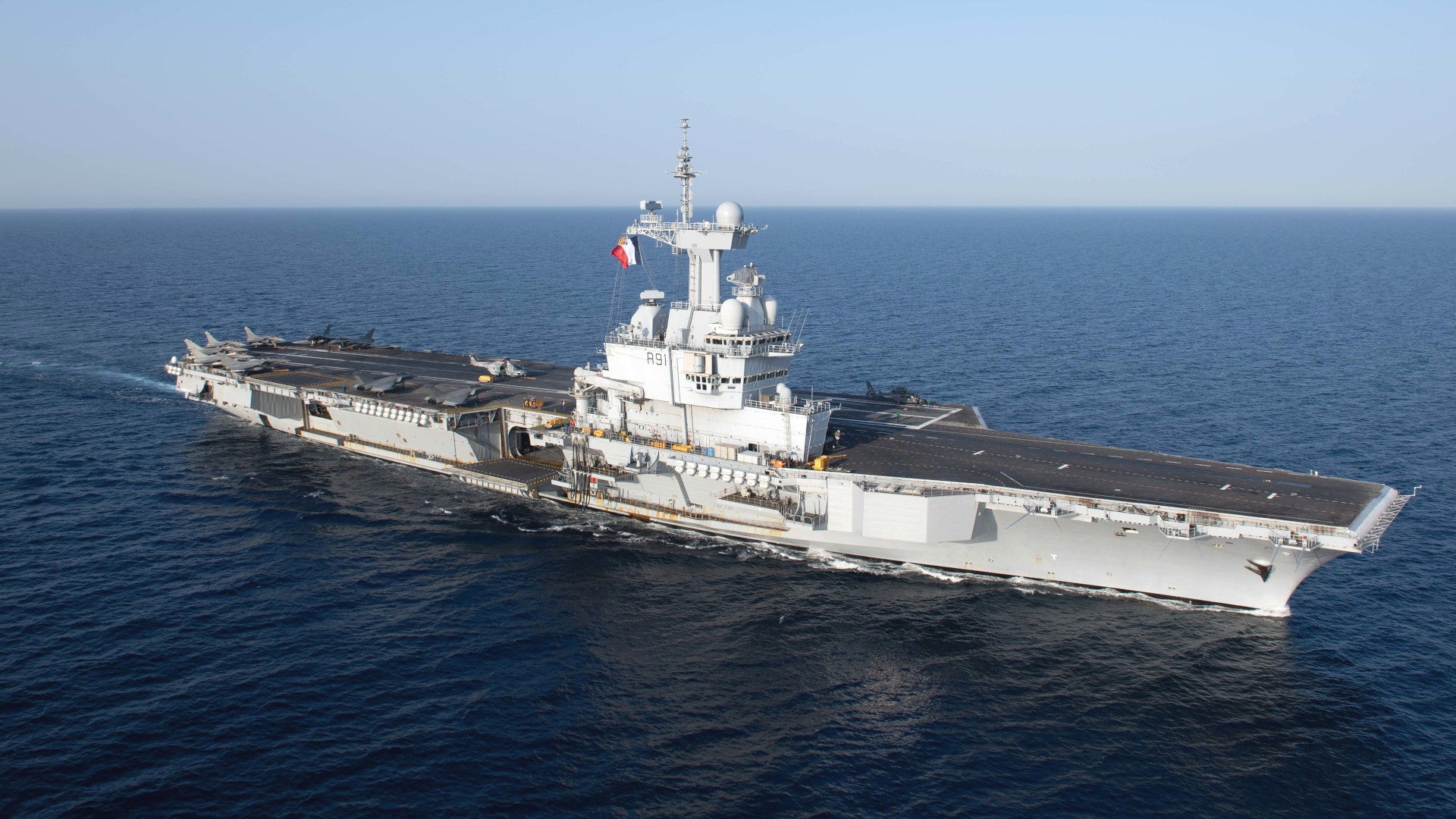France’s only aircraft carrier, the Charles de Gaulle, is heading home amid concerns that around 40 sailors on board may have contracted the COVID-19 novel coronavirus. This comes a day after news broke that at least two members of the crew of the U.S. Navy’s first-in-class USS Nimitz aircraft carrier had tested positive for the virus. All of this follows a whirlwind chain of events surrounding a major outbreak of the disease on board the Nimitz class USS Theodore Roosevelt
that began last month and came to head yesterday with the resignation of the Acting Secretary of the Navy.
The French Ministry of the Armed Forces first announced that Charles de Gaulle was on its way back to its homeport at Toulon Naval Base in the southern part of the country along the Mediterranean Sea on Apr. 8, 2020. The carrier, which has a total crew complement of around 2,000 personnel, had first departed on its latest deployment into the Atlantic, which the French Navy had dubbed Mission Foch, in January. The ship was originally scheduled to return home on Apr. 23.
“On board the aircraft carrier Charles de Gaulle currently deployed in the Atlantic as part of the Mission Foch, around forty sailors are today under close medical observation,” the French Ministry of the Armed Forces said in an official statement. “They are showing symptoms consistent with possible COVID-19 infection. These first symptoms have appeared recently.”

The French military has dispatched a screening team with specialized equipment to the carrier, which is sailing in the Mediterranean now, to begin testing members of the crew. The official statement also says individuals who are showing symptoms of the virus have been placed in isolation, but does not elaborate on the exact nature of their confinement. They have received masks and medical personnel are checking on their condition twice a day.
Charles de Gaulle does have robust medical facilities with a dedicated containment suite, as well as a sickbay with a dozen beds. A 20-person medical team, which includes doctors, surgeons, and nurses, staffs these facilities on board the ship. Thankfully, so far, the sailors who may have contracted COVID-19 are exhibiting mild symptoms.
Other sailors on the carrier are cleaning common areas twice daily and the size and frequency of official meetings have been scaled back. Limits have been set on the number of sailors to gather in certain spaces at once, as well. As the War Zone
noted last month, warships, where hundreds or even thousands of personnel work and live in very close quarters, present an especially worrisome potential breeding ground for COVID-19, which has proven to be readily transmissible, in general.
It’s not clear where Charles de Gaulle‘s crew may have first been exposed to the virus. However, on Mar. 25, the Belgian Ministry of Defense disclosed that at least one sailor on its Karel Doorman class frigate Leopold I had tested positive for COVID-19. The Leopold I, which is now back in its homeport of Zeebrugge, had sailed for a time as part of Charles de Gaulle‘s carrier strike group and its crew had engaged with their French counterparts. It is also possible that the Belgian sailor contracted the virus from a member of the French carrier’s crew. At the time of writing, France has had more than 82,000 confirmed COVID-19 cases and has seen more than 10,000 people die due to the virus or complications from it.

It’s also unclear what impacts the situation may have on the readiness of the Charles de Gaulle, which is also the flagship of the French Navy. As noted, the carrier was already scheduled to return from Mission Foch this month.
Regardless, the experience of the USS Theodore Roosevelt shows just how serious a danger COVID-19 potentially presents to navies, and military forces, in general, around the world. There are at least 173 confirmed cases among the crew of Roosevelt, which arrived in Guam on Mar. 26 after a small number of sailors tested positive for the virus and is now there indefinitely. The ship’s commanding officer, Captain Brett Crozier, sent a letter days later pleading to get the bulk of the sailors off the carrier and into lodging ashore to prevent the further spread of the virus and the risk of fatalities. Acting Secretary of the Navy Thomas Modly subsequently relieved Crozier of his command, ostensibly over a procedural issue, triggering a political firestorm that Modly had inflamed by giving a widely criticized speech on the carrier defending his actions. Modly’s resigned yesterday.
On Apr. 7, Politico first reported that a sailor assigned to the USS Nimitz had tested positive, raising new concerns about the spread of the virus within the Navy and its impact on the service’s ability to project power in response to other crises that might emerge. Nimitz, which is homeported in Bremerton, Washington, has been working up to its own deployment.

Sailors assigned to the Nimitz class carriers USS Carl Vinson and USS Ronald Reagan, which are undergoing maintenance in Washington State and Japan, respectively, have also tested positive for COVID-19. Of the Navy’s West Coast-based carriers, only the USS Abraham Lincoln, which returned to its homeport in San Diego, California in January following a record-setting deployment to the Middle East, does not have any crew members with the virus. The sidelining of Theodore Roosevelt had already forced the service to shift one of the two other carriers it had conducting operations in the Middle East to the Pacific region.
Other Navy ships, including the hospital ship USNS Comfort, which is in New York City helping with COVID-19 response efforts there, have reported cases among their crews. It is clear that the Navy, as well as the other branches of the U.S. military, are having difficulties balancing being prepared to respond to contingencies with taking steps necessary to limit the risk of potential outbreaks of the virus among their personnel.
The U.S. Navy is clearly not alone in this struggle, with reported COVID-19 cases emerging on Russian and Dutch submarines last month, in addition to the potential cases on France’s Charles de Gaulle and the confirmed case among the crew of Belgium’s Leopold I. It is still a worrisome trend and the virus continues to present an increasingly more serious threat to naval operation and general military readiness worldwide.
Contact the author: joe@thedrive.com
